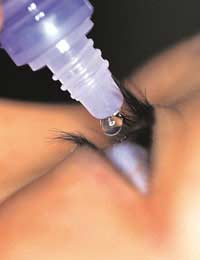Administering Ear and Eye Drops Safely

Administering Drops Safely
Sometimes medicines will be prepared in the form of ear drops or eye drops. This may be because it is the only or simplest method of preparing the drug, or because it is easier to use drops than take tablets, particularly when the recipient is a child or a person unable to take tablets.Although, for most people, giving or receiving ear drops or eye drops is not a problem, there are certain guidelines that should be adhered to, to ensure optimal safety.Risks Of Giving Eye Drops
As with any medication, or indeed substance, there is always a risk of the recipient being allergic to the ingredients. If there is any family or past medical history of allergic reactions to medicines, it is imperative that you inform your doctor as the list of ingredients can be examined to make sure it is not contained in the preparation.Whoever is giving the eye drops should make sure their hands are clean and the external surface of the medicine container. Most eye drops are given for an infection or as a preventative measure after eye surgery, so it is vital that infection is not introduced to the eye by the administration of the eye drops.
Careful note should be taken of the exact dose to be given and these rules strictly followed; overdose may cause a reaction. Although unlikely there is a chance that the person giving the drops will cause a trauma to the eye by holding the container too close to the surface of the eye.
Always make sure that the person dispensing the eye drops can see clearly and is not visually impaired in any way.Always inform your doctor if you suspect you might be pregnant as certain drugs are not safe to use whilst pregnant or breastfeeding.
Risks Of Giving Ear Drops
These risks are the same as administering eye drops with the addition of the drug not being fully effective if they are permitted to run straight out of the ear after administration. The person receiving the drug should take precaution after being given the medicine by restricting movement for a few minutes until the drops have had a chance to reach the inside of the ear and will be less likely to run out.Administering Drops Safely
- Always read the instructions on the label of the medication, including dose, correct name of person and expiry date.
- Ensure hands are not soiled and have been washed.
- Make sure the person who is giving the drops can see clearly and is safe to give the drops.
- Always shake the container to ensure the ingredients are mixed together well and the solution has not separated.
- If giving eye drops, tilt the head back slightly and ask the person to look up. Gently retract the lower lid and allow one drop at a time to enter the eye. It might help to allow a minute or two between drops if more than one is to be given.
- If giving ear drops, tilt the head to one side, give one drop at a time and ensure the head remains tilted until the solution has had a chance to run into the ear properly.
- Wipe any excess away with a tissue and discard.
- Make sure the top is placed back on the container properly and store as instructed away from young children.
Ear and eye drops and fairly safe methods of administering medications but there are still some basic rules that should be followed to ensure safety is maintained.Always read the instruction, patient leaflet or ask your doctor or pharmacist if you are unsure.








